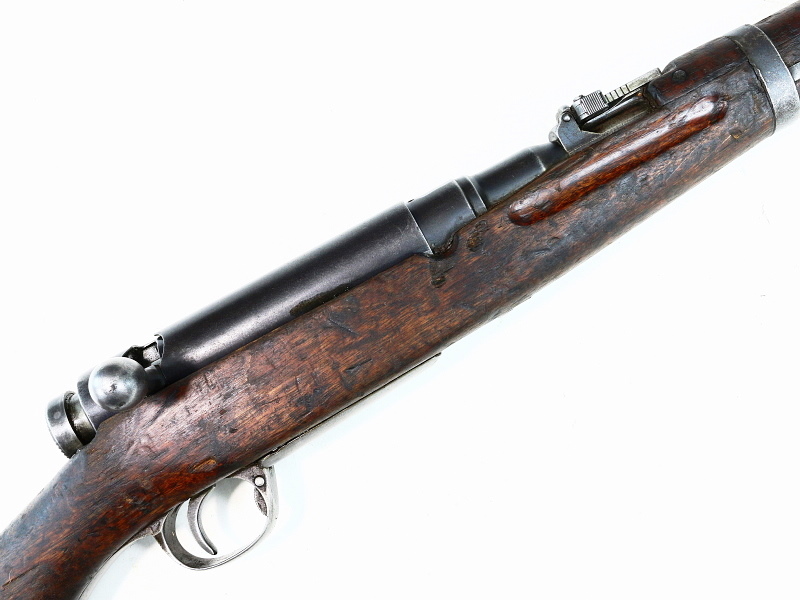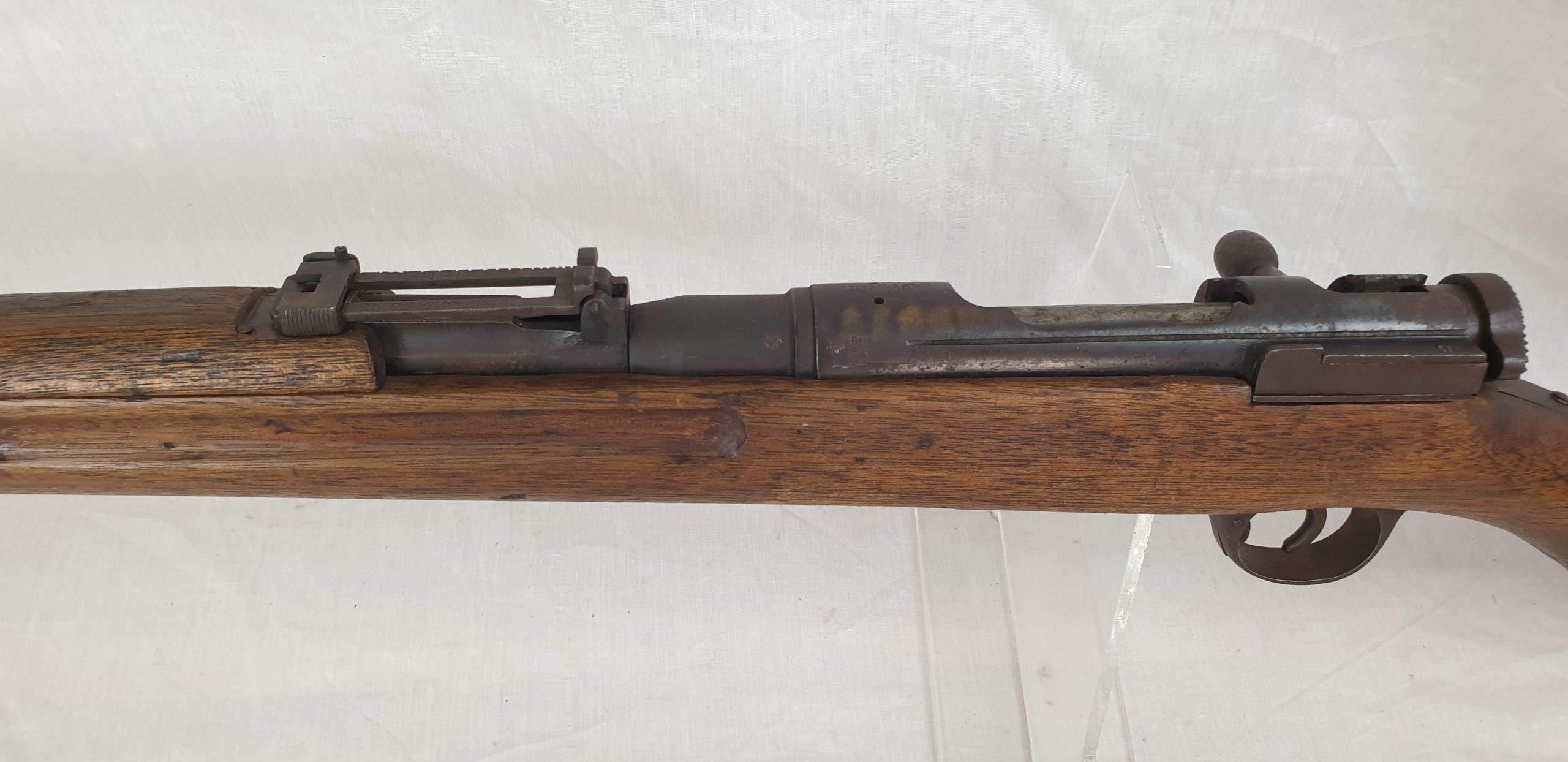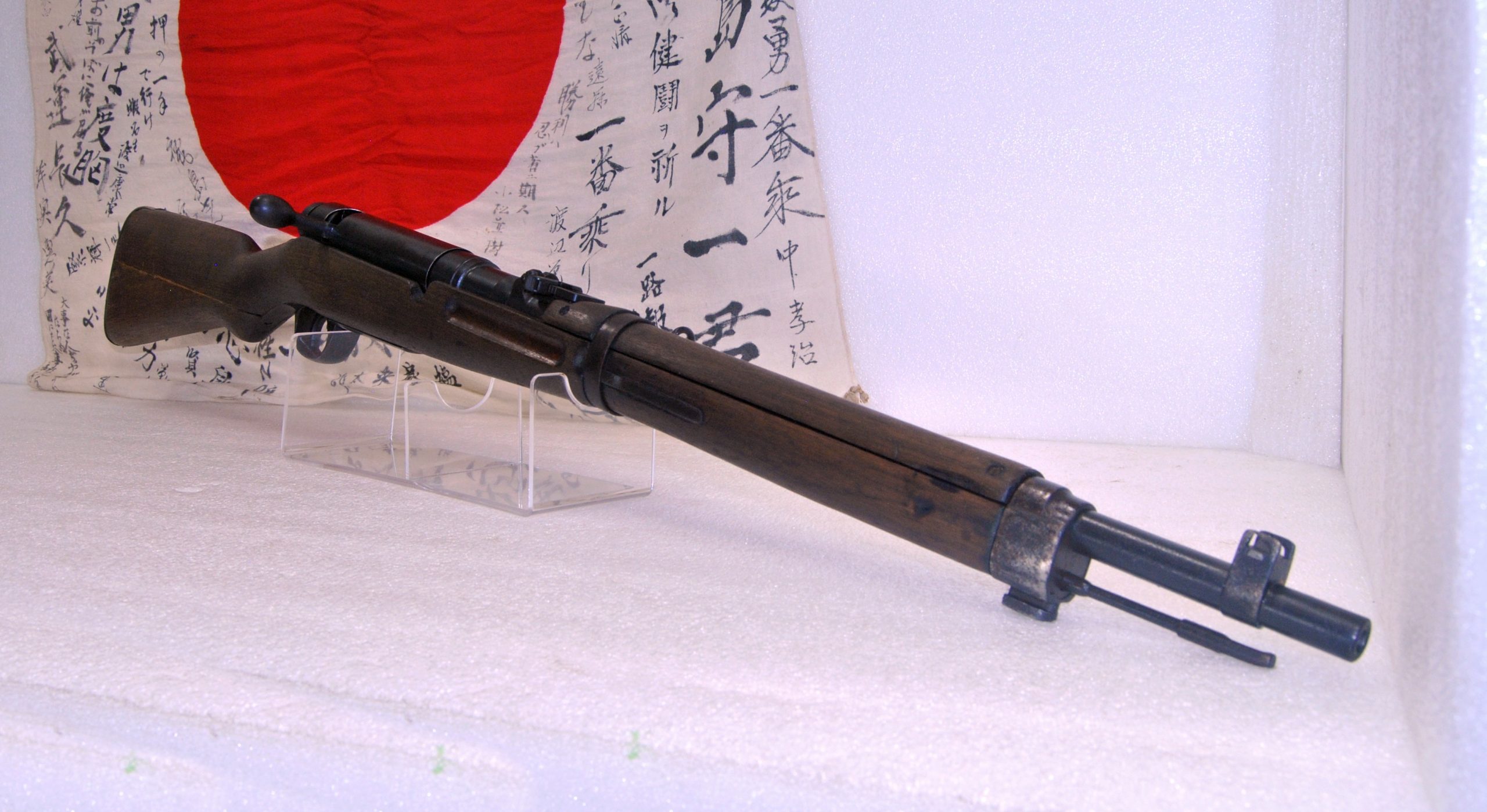

The 2.5x scope is positioned to the left of the bore instead of directly over it. The Type 97 sniper rifle is merely a Type 38 in all dimensions, but with a quick-detachable scope mounted to a rail on the left side of the action. There were three other variations of the basic Type 38 6.5x50mm. I have found that when shooting with the peep sight that far out, it works fine for slow fire, but in rapid-fire shooting it is easy to “acquire” one of the front sight’s “wings” in the peep instead of the sight blade. The Type 38 rifle’s rear sight in my collection is a peep style, but instead of being near the shooter’s eye, it’s out on the barrel where open sights are usually located. Sights on most Type 38s included a simple open rear and a blade front with strong “wings” to protect it from damage in bayonet duels. If a Japanese rifle or carbine has the chrysanthemum ground off the receiver, it means the gun was handed out postwar from Japanese stock.As stated, rifles were considered bayonet handles, so Type 38s were fitted with 31.5-inch barrels for an overall length of 50 inches and a weight of about 9 pounds. The safety was a large, knurled steel cap at the end of the bolt. Instead of a circular knob on the bolt handle, they had an elongated version. In basic form, Type 38s differed from most Mauser military rifles only in detail. It was a Mauser ’98-style bolt action with a five-round integral box magazine loaded by means of stripper clips. Aimed fire with rifles at night is a near impossibility, so hetai (infantrymen) training centered upon closing with the enemy and using bayonets.Īt the war’s beginning, which for Japan was 1937 on mainland China, the standard-issue infantry rifle was the Type 38 6.5x50mm that had been adopted in 1905.

This fact dovetails with the stress of officers who were trained for night fighting. In regard to doctrine, Japanese officers considered rifles as little more than handles for bayonets. However, their faults were not in workmanship they were in design and doctrine for use. The above should not be construed to mean the IJA fought with perfect small arms. Although, their stock wood was never equal to good American walnut on Model 1903 Springfields or the laminated wood Germany started using on midwar K98k Mausers.

At right is a Type 99 7.7mm sniper rifle.Prewar-manufactured rifles and carbines, collectively nicknamed Arisakas, had metal work and finish on a par with most nations’ military bolt actions. At left is an Imperial Japanese Army Type 97 6.5mm sniper rifle.


 0 kommentar(er)
0 kommentar(er)
